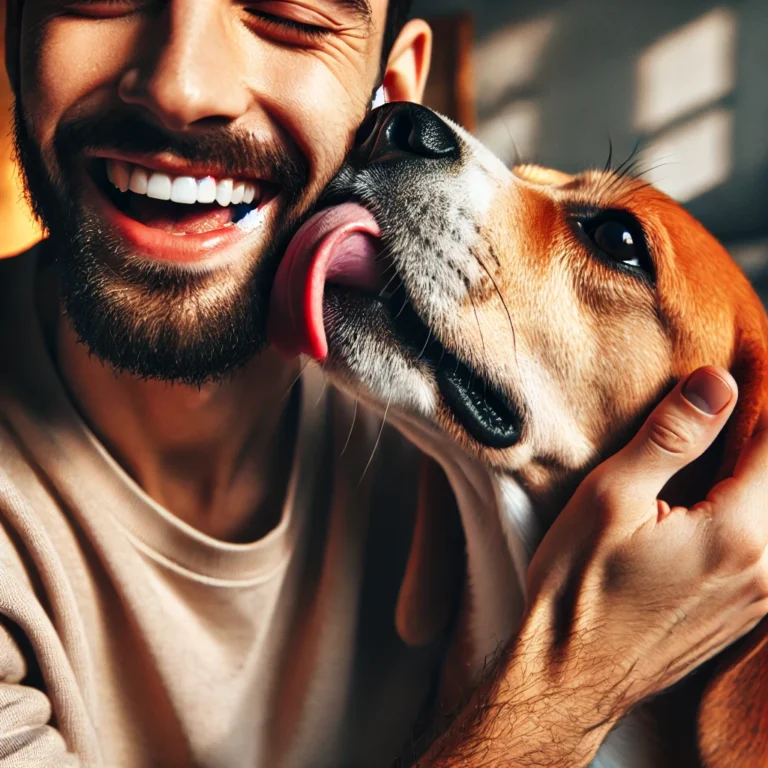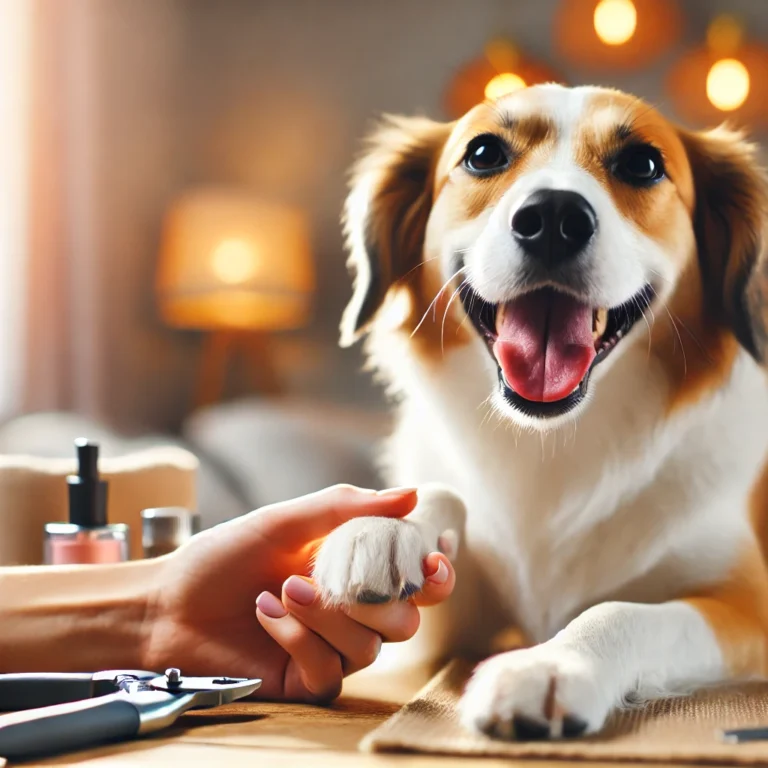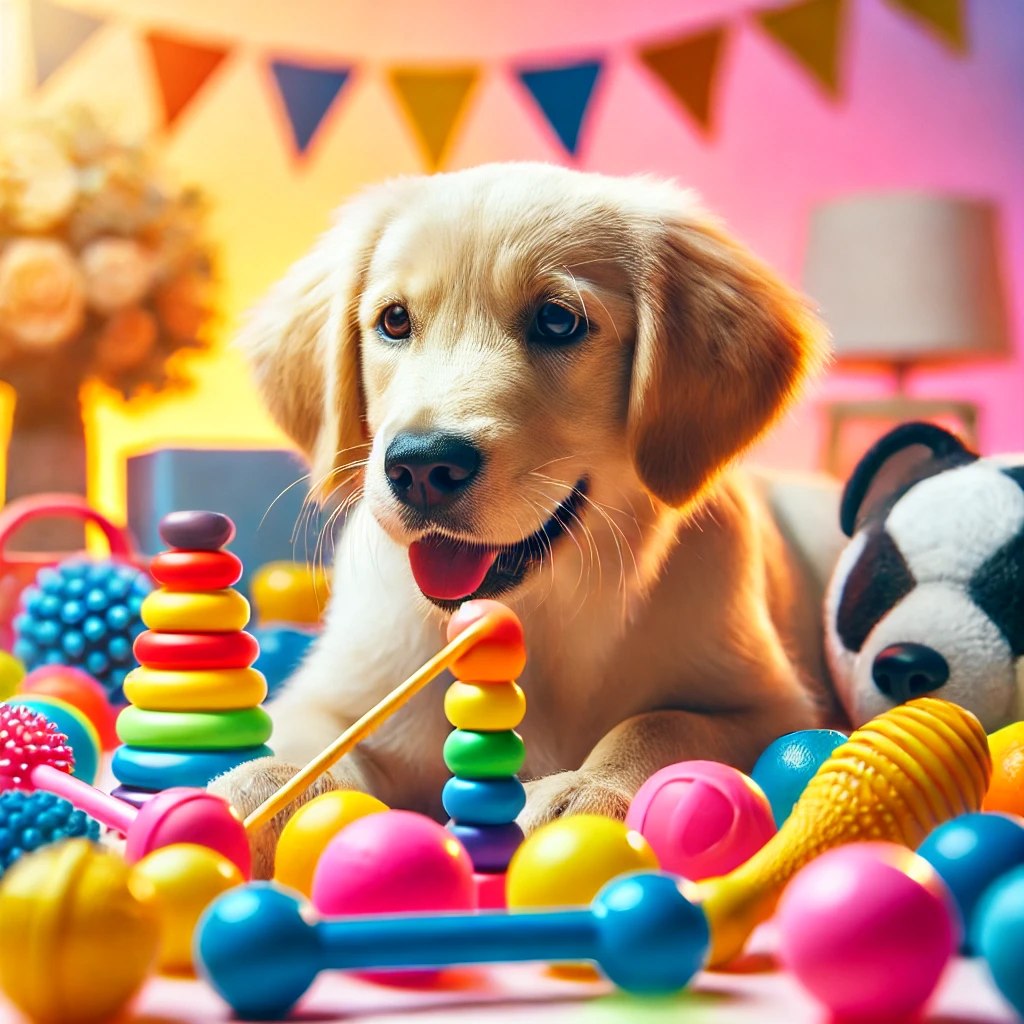
When we look at the world around us, we see a vibrant spectrum of colors that range from the deep blue of the ocean to the bright reds of a sunset.
But have you ever wondered how your dog perceives these same scenes?
The question, “What colors can dogs see?” has intrigued scientists, veterinarians, and pet owners alike for many years.
Understanding your pet’s visual world is not just a matter of curiosity—it can also help you make better choices for their environment, toys, and training.
In this blog post, we’ll delve deep into the science of canine vision, exploring what colors can dogs see, how their eyes differ from ours, and what this means for their day-to-day experiences.
By the end, you’ll have a clearer understanding of how your furry friend perceives the world, and how you can use this knowledge to enhance their quality of life.
The Science Behind Canine Vision
Anatomy of a Dog’s Eye
To understand what colors can dogs see, we first need to look at the anatomy of a dog’s eye.
While dogs and humans share some similarities in eye structure, there are significant differences that affect how dogs perceive color.
Dogs have two types of color receptors, or cones, in their retinas, compared to three in humans.
This means that while humans can see a broad range of colors, including red, green, and blue (a capability known as trichromatic vision), dogs are limited to seeing only some of these colors.
Their vision is similar to that of a human with red-green color blindness.
The two types of cones in a dog’s eye are most sensitive to blue and yellow wavelengths of light.
This means that dogs can see shades of blue and yellow, but they struggle to differentiate between red and green.
For example, to a dog, red may appear as a dark brown or black, and green could be perceived as a dull yellow.
The Role of Rods
Another important aspect of canine vision is the role of rods, which are the photoreceptors responsible for detecting light and motion, rather than color.
Dogs have a higher concentration of rods in their retinas than humans do, which means they have superior night vision and are more sensitive to movement.
This trait likely evolved from their ancestors’ need to hunt in low-light conditions.
However, this advantage in low light comes at the cost of color vision.
While dogs are excellent at detecting motion and seeing in the dark, their ability to perceive colors is much more limited compared to humans.
This trade-off has significant implications for understanding what colors can dogs see and how they navigate their environment.
What Colors Can Dogs See?

The Color Spectrum for Dogs
So, what colors can dogs see? Based on the structure of their eyes, dogs perceive the world primarily in shades of yellow, blue, and gray.
The lack of a third cone, which would allow them to see red and green, means that the color spectrum for dogs is much narrower than it is for humans.
For a more detailed understanding, here’s how the primary colors appear to dogs:
- Blue: Dogs can see blue clearly, and it is one of the most prominent colors in their visual spectrum. Objects that are blue will stand out to them against a background of other colors.
- Yellow: Yellow is another color that dogs can see well. It appears bright and distinct in their vision, similar to how we perceive yellow.
- Red and Green: These colors are not distinguishable for dogs. Red appears dark or black to them, while green is often seen as a dull yellow or gray.
- Other Colors: Colors that are combinations of red, green, and blue will also be affected. For example, purple, which is a mix of red and blue, may appear as just blue to a dog.
This limited color perception is similar to the condition known as deuteranopia in humans, where individuals have difficulty distinguishing between red and green.
Practical Implications of Canine Color Vision
Understanding what colors can dogs see has practical implications for pet owners.
For instance, when choosing toys or training tools, selecting items that are blue or yellow may make them more visually appealing to your dog.
Conversely, red or green toys may not be as easily noticed, especially if they are placed against grass or other natural backgrounds.
This knowledge can also be applied to training and safety.
For example, if you’re using visual signals for training, ensuring that these signals are in colors your dog can see clearly—like blue or yellow—will help your dog understand and respond better.
How Dogs Use Their Vision in Daily Life
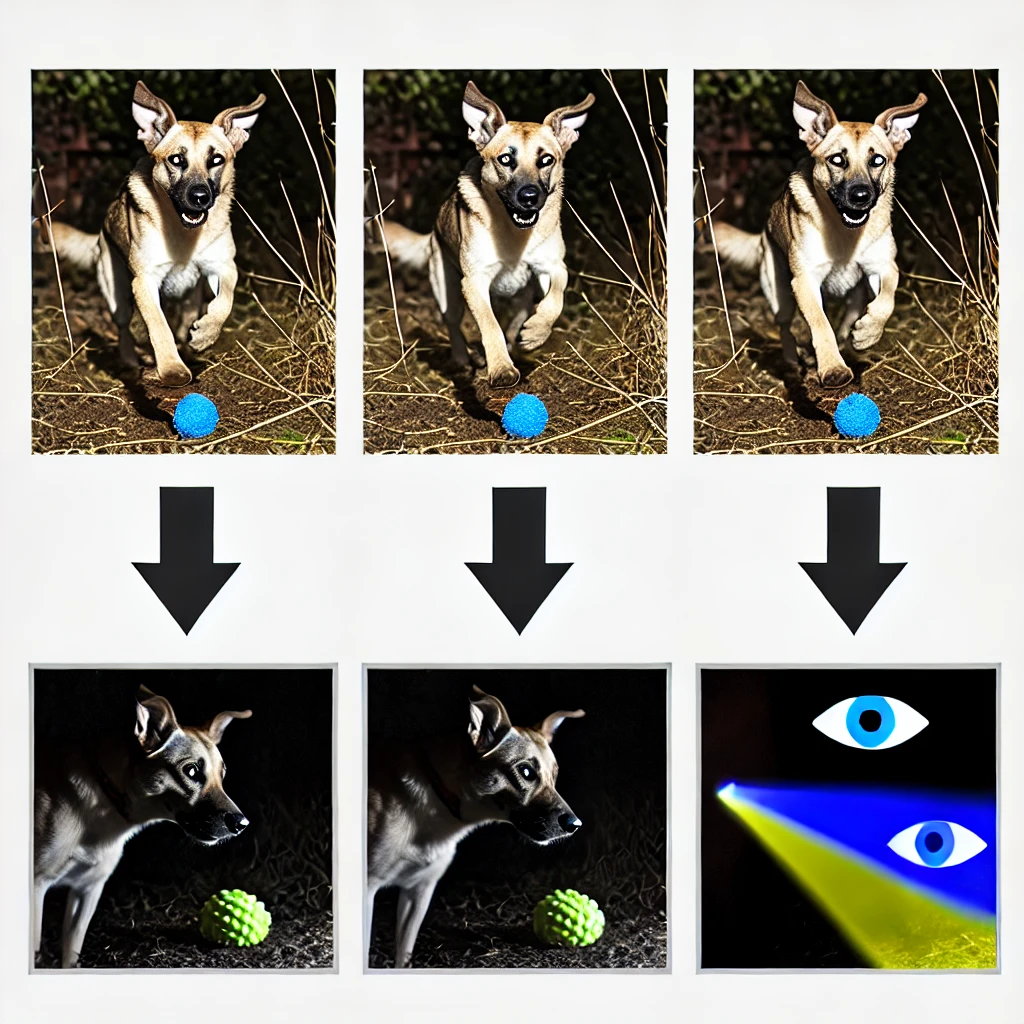
Movement and Night Vision
While dogs may not see the full range of colors that humans do, they excel in other areas of vision that are crucial for their survival and daily activities.
One of the most significant advantages dogs have is their ability to detect motion.
Dogs are much better at noticing movement than humans are, even at a distance.
This ability is a direct result of their higher concentration of rod cells, which are more sensitive to motion and low light.
In the wild, this trait would have been essential for spotting prey or detecting predators, and even today, it plays a crucial role in a dog’s ability to interact with its environment.
In addition to their keen motion detection, dogs also have excellent night vision.
Their eyes contain a reflective layer called the tapetum lucidum, which enhances their ability to see in low-light conditions.
This is why you might notice your dog being active at dusk or dawn—times when their vision is at its peak.
Smell and Hearing: Complementary Senses
While we’re focusing on what colors can dogs see, it’s important to remember that dogs rely heavily on their other senses—particularly smell and hearing—to interpret the world around them.
In fact, a dog’s sense of smell is its most powerful tool, far outweighing its reliance on vision.
Dogs use their noses to gather information about their environment, people, other animals, and even their food.
Their olfactory system is so advanced that they can detect scents that are imperceptible to humans, such as the presence of certain diseases or the emotions of other creatures.
Similarly, dogs have an acute sense of hearing, which allows them to pick up on sounds that are beyond the range of human hearing.
This sensitivity to sound and smell often compensates for their limited color vision, allowing them to navigate the world effectively despite seeing fewer colors.
How Canine Vision Affects Training and Interaction
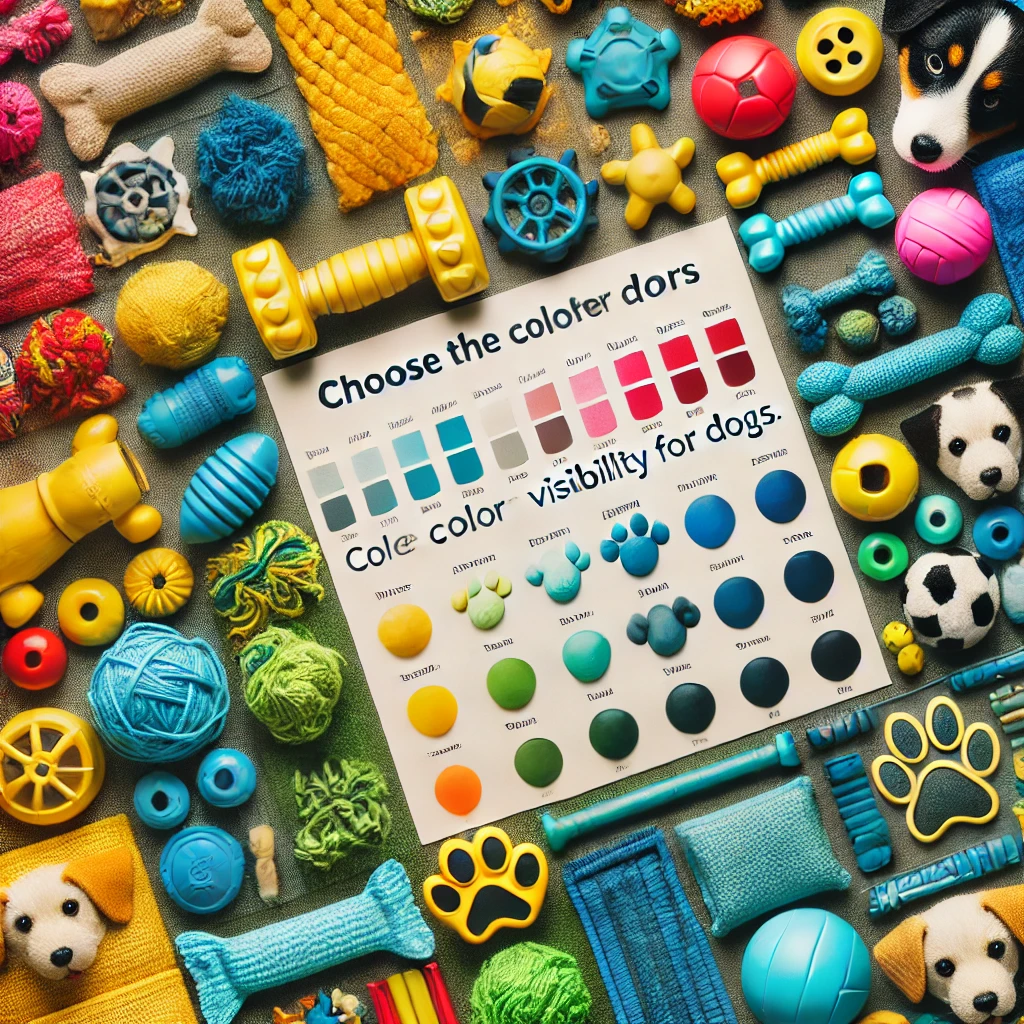
Choosing the Right Toys
Knowing what colors can dogs see can significantly impact the types of toys you choose for your pet.
Since dogs can see blue and yellow most clearly, selecting toys in these colors can make playtime more engaging and enjoyable for them.
For example, a bright blue ball will be easier for your dog to see in the grass compared to a red one, which might blend into the surroundings.
Interactive toys that move or make noise can also capture your dog’s attention more effectively than static toys, due to their enhanced ability to detect motion.
Combining these elements—movement, noise, and visible colors—can provide your dog with a richer and more stimulating play experience.
Training Techniques
Understanding what colors can dogs see is also crucial when it comes to training.
If you’re using colored objects as visual cues or rewards, opt for colors that your dog can easily distinguish, such as blue or yellow.
This will help ensure that your dog can see the signals clearly and respond accordingly.
Moreover, since dogs are more attuned to movement than color, incorporating hand signals or moving objects into your training routine can be more effective than relying on color alone.
For example, a hand gesture might be more noticeable to your dog than a colored flag or object.
Designing Your Dog’s Environment
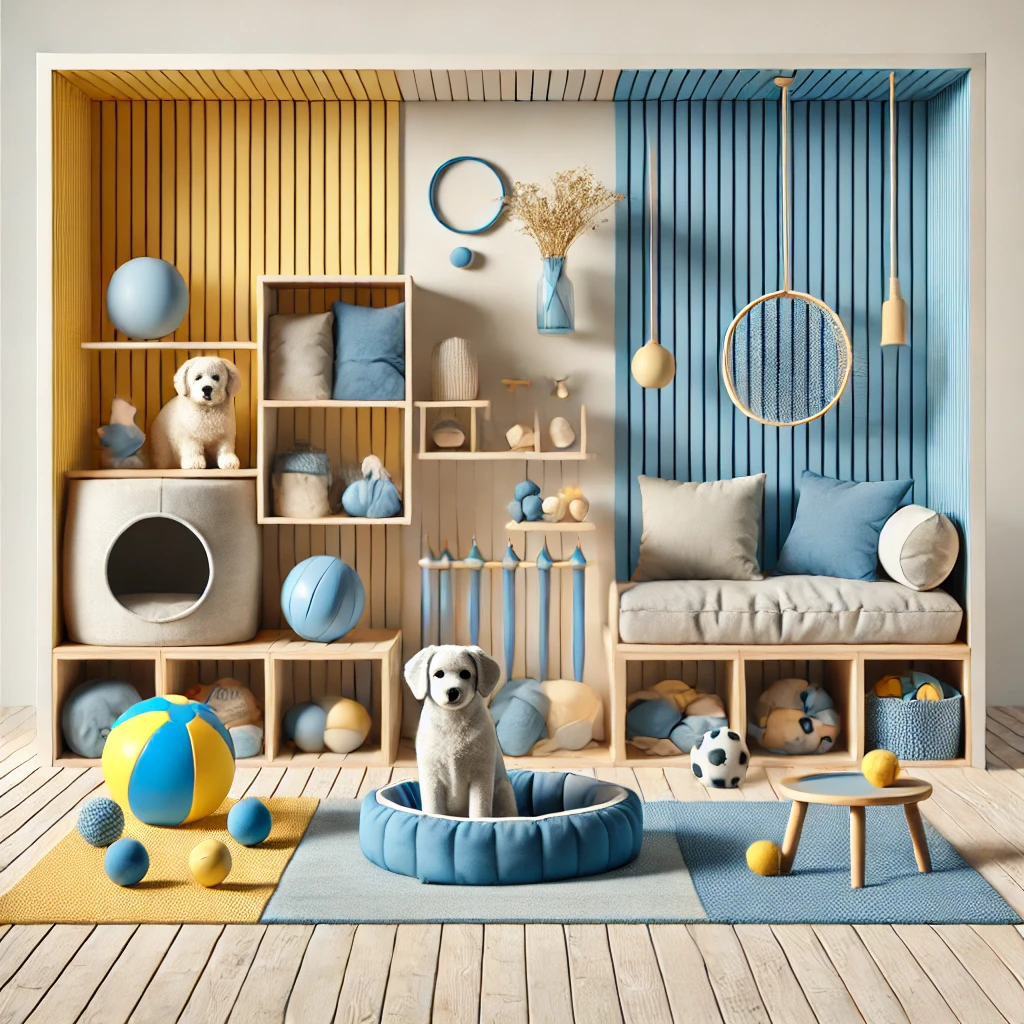
If you’re designing or organizing spaces for your dog, such as a play area or sleeping quarters, consider the colors you use.
Avoid using red or green as primary colors in these spaces, as they may appear muted or indistinguishable to your dog.
Instead, opt for blues, yellows, or neutrals that your dog can see more clearly.
This consideration can also extend to accessories like collars, leashes, and beds.
Choosing items in colors that stand out to your dog can make them more appealing and easier to find, enhancing your dog’s comfort and enjoyment.
Myths and Misconceptions About Canine Vision
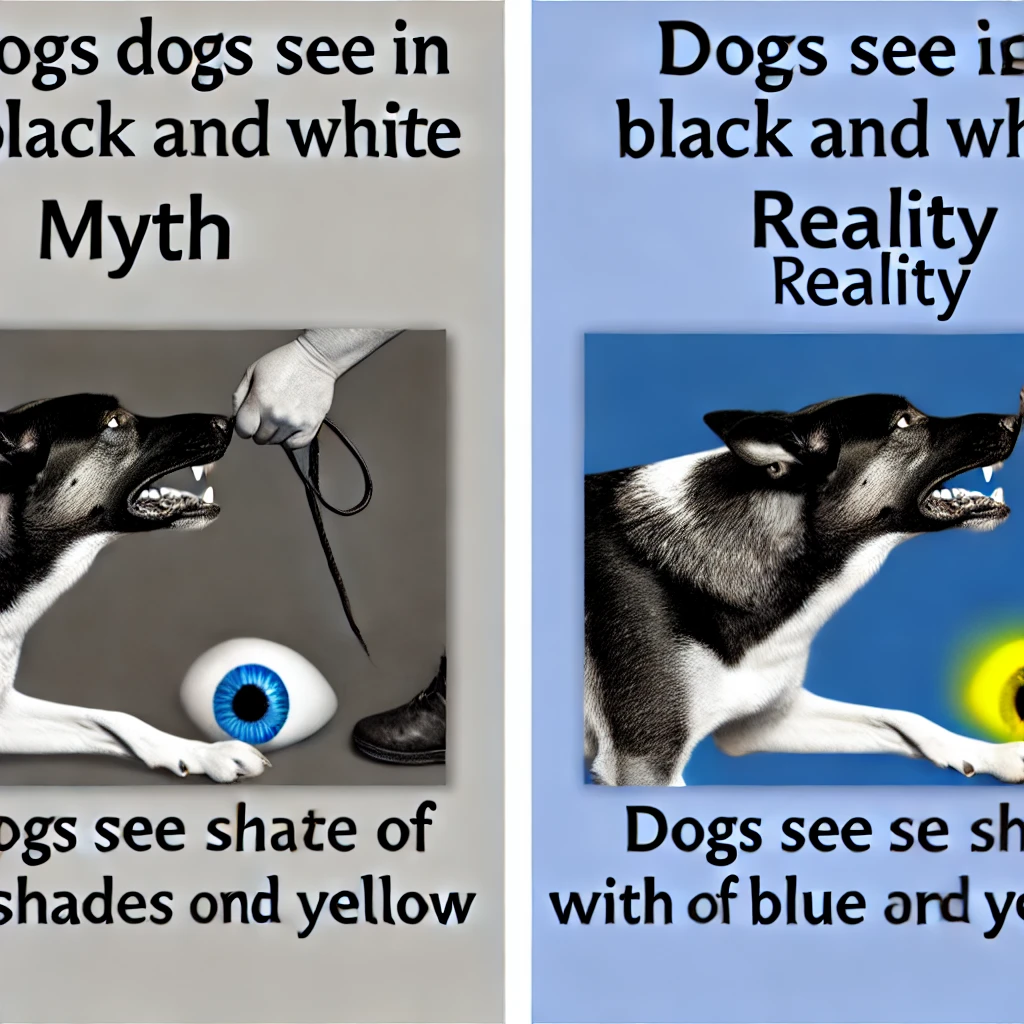
Myth 1: Dogs See in Black and White
One of the most common misconceptions about canine vision is the belief that dogs see the world only in black and white.
While it’s true that dogs see a more limited color spectrum than humans, their vision is not entirely devoid of color.
As we’ve discussed, dogs can see shades of blue, yellow, and gray, which means their world is not as dull as some might think.
The idea that dogs see only in black and white likely stems from early scientific studies that were not as advanced as the research we have today.
Myth 2: Dogs Have Poor Vision
Another misconception is that dogs have poor vision overall.
While it’s true that dogs don’t see colors as vividly as humans do, they excel in other areas, such as motion detection and night vision.
These strengths make up for their limited color perception, allowing them to interact with their environment effectively.
Dogs have evolved to rely more on their senses of smell and hearing, but their vision is perfectly suited to their needs, especially in the context of their evolutionary history as hunters and pack animals.
Myth 3: Dogs Can’t Recognize Their Owners by Sight
Some people believe that dogs rely solely on smell to recognize their owners and can’t distinguish them by sight.
While smell is undoubtedly a critical sense for dogs, they are also capable of recognizing familiar faces and objects visually.
However, this recognition is based more on shape and movement than color.
Dogs can identify their owners by their overall appearance, including body shape, posture, and the way they move.
So, while color may not play a significant role, sight is still an important part of how dogs perceive and recognize the people they know and love.
How to Use Your Dog’s Vision to Enhance Their Life
Choosing the Right Environment
Understanding what colors can dogs see allows you to create environments that are more visually stimulating and comfortable for your pet.
For example, if you’re setting up a play area, incorporating blue and yellow elements can make the space more engaging for your dog.
Avoid using too much red or green, which may appear dull and uninteresting to them.
Similarly, in outdoor spaces, choosing plants, toys, and even furniture in colors that your dog can see clearly can enhance their experience.
This approach not only makes the environment more enjoyable for your dog but also encourages more active play and interaction.
Tailoring Play and Exercise
When planning playtime or exercise routines, consider incorporating toys and activities that cater to your dog’s visual strengths.
Fast-moving objects, like balls or Frisbees, are more likely to catch your dog’s attention, especially if they’re in a color your dog can see well.
Incorporating movement and visible colors into playtime can make the activity more engaging and enjoyable for your dog.
Interactive toys that involve both movement and noise can be particularly effective.
These toys not only stimulate your dog’s vision but also their hearing, providing a multi-sensory experience that keeps them entertained and mentally stimulated.
Improving Training Success

Training your dog can be more effective when you take their vision into account.
Using visual cues that are easy for your dog to see, such as hand signals or objects in blue or yellow, can improve your dog’s ability to learn and respond to commands.
Additionally, incorporating movement into your training, such as using a moving target or signal, can make it easier for your dog to understand and follow instructions.
Remember that while vision is important, dogs also rely heavily on other senses, such as smell and hearing, during training.
Combining visual signals with vocal commands and scent-based cues can create a more comprehensive and effective training experience for your dog.
Here are examples of dog toys that align with the different types discussed, each designed to cater to a dog’s color vision and play preferences:
Dog Toys and How They Relate to Canine Vision
Types of Toys That Enhance Playtime
Beyond color, the type of toy you choose can also influence how much your dog enjoys playtime. Given their keen sense of motion and hearing, selecting toys that incorporate movement and sound can provide a more stimulating experience.
1. Interactive Toy: Outward Hound Hide-A-Squirrel Plush Dog Toy
- Description: This interactive toy is designed to challenge your dog’s mind by hiding squeaky squirrels inside a plush tree trunk. The toy is available in a variety of sizes and the bright, contrasting colors make it visually stimulating for your dog.
2. Puzzle Toy: Nina Ottosson by Outward Hound Dog Tornado Puzzle Toy
- Description: This puzzle toy challenges your dog to find hidden treats by moving the spinning compartments. Available in blue, it’s designed to be easily seen by dogs, adding both visual and mental stimulation to playtime.
3. Fetch Toy: Chuckit! Ultra Ball
- Description: The Chuckit! Ultra Ball is a highly durable fetch toy available in bright blue and orange, making it easy for your dog to see in both grass and water. It’s buoyant and bouncy, adding an extra level of fun during playtime.
4. Tug Toy: Mammoth Flossy Chews Color Rope Tug
- Description: This durable rope tug toy is available in bright, contrasting colors like blue and yellow, which are easy for your dog to see. It’s perfect for interactive tug-of-war games and also helps clean your dog’s teeth as they play.
5. Chew Toy: Nylabone Dura Chew Textured Ring
- Description: This durable chew toy is designed to withstand aggressive chewers and is available in bright colors like yellow, making it easy for your dog to spot. It’s a great choice for dogs who need something to chew on to relieve stress or boredom.
6. Water Toy: Kong Aqua Floating Dog Toy
- Description: The Kong Aqua is a floating fetch toy available in bright orange, making it highly visible in water. It’s perfect for dogs who love to swim and play fetch in the water, with a durable construction that ensures it lasts through many play sessions.
7. Plush Toy: ZippyPaws Squeaky Plush Dog Toy (Donutz)
- Description: This plush toy is designed to look like a colorful donut and comes in vibrant colors that are easy for dogs to see. It’s soft and features multiple squeakers, making it a great cuddle toy that also engages your dog’s senses.
These toy recommendations are made based on suitability for dogs’ color vision and play preferences. Each toy is designed to engage your dog visually and mentally, ensuring that playtime is both fun and stimulating.
Conclusion
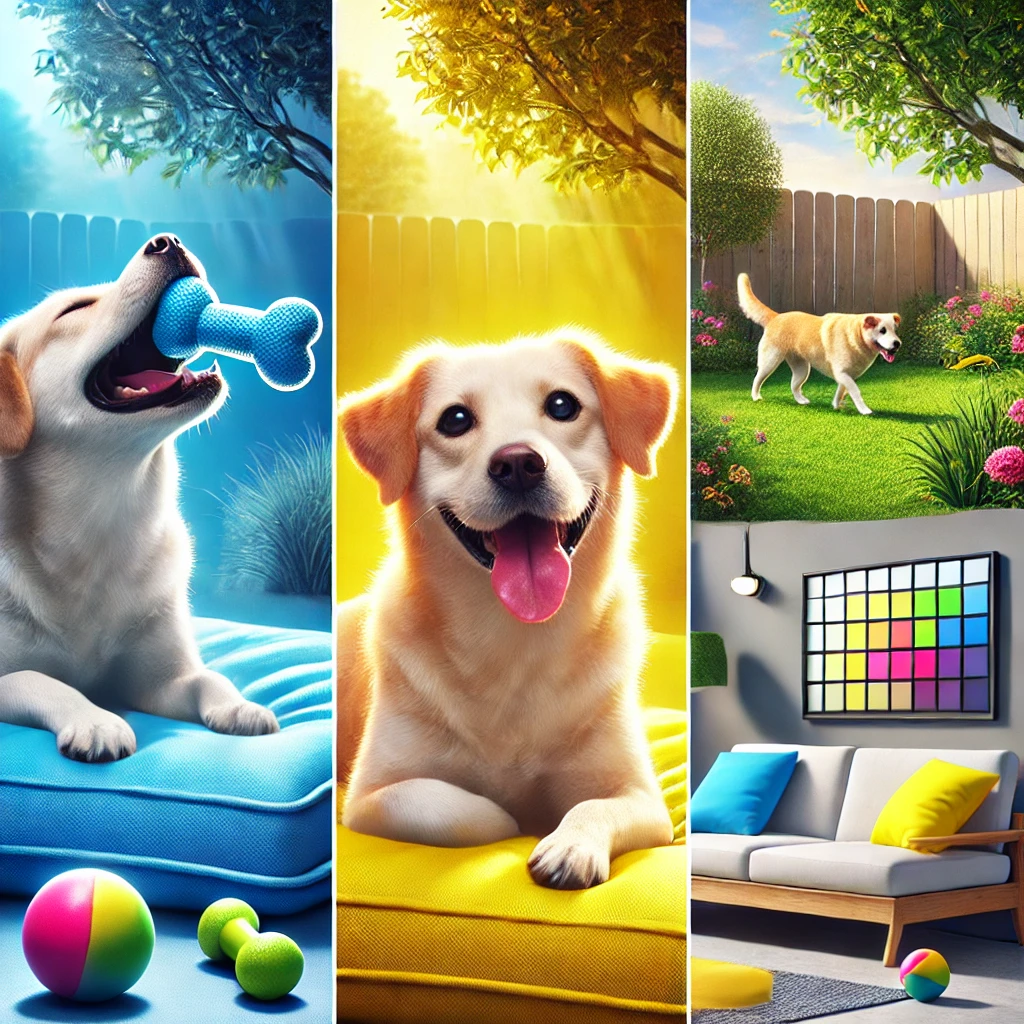
Understanding what colors can dogs see provides valuable insights into how your pet perceives the world.
While dogs may not see the full spectrum of colors that humans do, their vision is perfectly adapted to their needs, allowing them to navigate their environment, detect movement, and interact with the world around them.
By taking into account the colors that dogs can see, you can make informed decisions about the toys, training tools, and environments you create for your pet.
Whether you’re choosing a new toy, planning a training session, or designing a play area, understanding your dog’s visual world can enhance their experience and strengthen your bond.
In the end, while the world may look different through a dog’s eyes, it’s just as rich and meaningful to them as it is to us.
By appreciating these differences and catering to your dog’s unique vision, you can provide a more fulfilling and enjoyable life for your furry friend.
Related Articles:
Why Does Your Pup Give You the Dog Side Eye?
Top 10 Chic Dog Crate Furniture Designs for Your Home
As an Amazon Associate, I earn commission from qualifying purchases.

